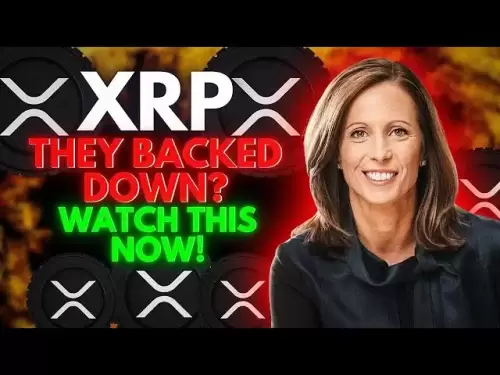-
 Bitcoin
Bitcoin $117500
2.15% -
 Ethereum
Ethereum $3911
6.19% -
 XRP
XRP $3.316
10.79% -
 Tether USDt
Tether USDt $1.000
0.01% -
 BNB
BNB $787.2
2.24% -
 Solana
Solana $175.2
4.15% -
 USDC
USDC $0.9999
0.00% -
 Dogecoin
Dogecoin $0.2225
8.40% -
 TRON
TRON $0.3383
0.28% -
 Cardano
Cardano $0.7868
6.02% -
 Stellar
Stellar $0.4382
9.34% -
 Hyperliquid
Hyperliquid $40.92
7.56% -
 Sui
Sui $3.764
7.63% -
 Chainlink
Chainlink $18.48
10.66% -
 Bitcoin Cash
Bitcoin Cash $582.1
1.88% -
 Hedera
Hedera $0.2601
6.30% -
 Avalanche
Avalanche $23.33
4.94% -
 Ethena USDe
Ethena USDe $1.001
0.02% -
 Litecoin
Litecoin $122.3
2.04% -
 UNUS SED LEO
UNUS SED LEO $8.969
-0.27% -
 Toncoin
Toncoin $3.339
0.86% -
 Shiba Inu
Shiba Inu $0.00001287
4.30% -
 Uniswap
Uniswap $10.43
7.38% -
 Polkadot
Polkadot $3.861
5.08% -
 Dai
Dai $1.000
0.02% -
 Bitget Token
Bitget Token $4.513
3.41% -
 Monero
Monero $267.7
-6.18% -
 Cronos
Cronos $0.1499
4.14% -
 Pepe
Pepe $0.00001110
5.15% -
 Aave
Aave $284.9
8.28%
How to open an account for Gate.io Futures Trading?
To start trading futures on Gate.io, register, complete KYC verification, enable 2FA, deposit funds, and access the futures platform to place your first trade.
Apr 03, 2025 at 09:01 am
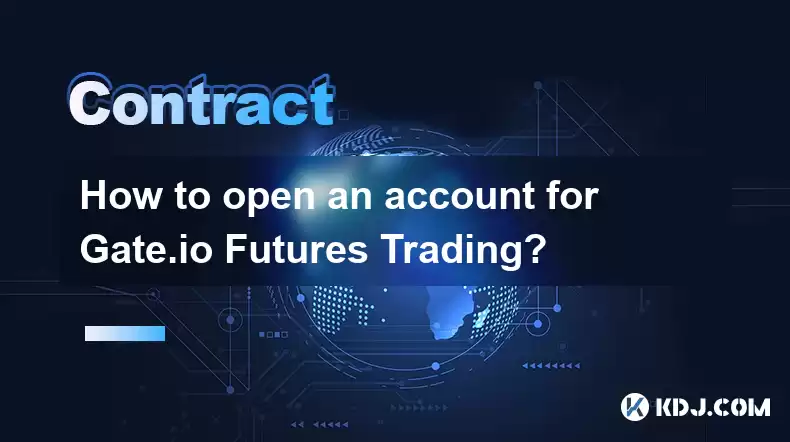
Opening an account for Gate.io Futures Trading is a straightforward process that allows you to dive into the exciting world of cryptocurrency futures. To get started, you'll need to follow a few simple steps to ensure your account is set up correctly and securely. This guide will walk you through the process, from registering on the Gate.io platform to setting up your futures trading account. By the end, you'll be ready to explore the potential of futures trading with confidence.
Registering on Gate.io
The first step to opening a Gate.io Futures Trading account is to register on the Gate.io platform. Here's how you can do it:
- Visit the Gate.io website and click on the "Sign Up" button located at the top right corner of the page.
- Fill out the registration form with your email address and create a strong password. Make sure to use a combination of letters, numbers, and special characters to enhance security.
- After submitting the form, you'll receive a verification email. Click on the link provided in the email to verify your account.
- Once your email is verified, you can log in to your Gate.io account using your email and password.
Completing KYC Verification
To access Gate.io Futures Trading, you'll need to complete the Know Your Customer (KYC) verification process. This is a standard procedure to ensure the security and compliance of the platform. Here's what you need to do:
- Log in to your Gate.io account and navigate to the "KYC Verification" section.
- Select the appropriate verification level based on your trading needs. For futures trading, you'll need to complete at least Level 2 verification.
- Provide the required personal information, including your full name, date of birth, and country of residence.
- Upload clear and legible copies of your government-issued ID, such as a passport or driver's license.
- Take a selfie with your ID to complete the facial recognition process.
- Wait for the verification process to be completed. This may take a few hours to a few days, depending on the volume of applications.
Enabling Two-Factor Authentication (2FA)
To enhance the security of your Gate.io Futures Trading account, it's highly recommended to enable Two-Factor Authentication (2FA). Here's how to set it up:
- Log in to your Gate.io account and go to the "Security" section.
- Click on "Enable 2FA" and choose your preferred method, such as Google Authenticator or SMS.
- Follow the on-screen instructions to set up 2FA on your device.
- Once enabled, you'll need to enter a unique code generated by your 2FA app or received via SMS every time you log in or perform certain actions on your account.
Depositing Funds into Your Gate.io Account
Before you can start trading futures on Gate.io, you'll need to deposit funds into your account. Here's how to do it:
- Log in to your Gate.io account and navigate to the "Wallet" section.
- Click on "Deposit" and select the cryptocurrency you want to deposit.
- You'll be provided with a unique deposit address for the selected cryptocurrency. Copy this address carefully.
- Use your external wallet or exchange to send the desired amount of cryptocurrency to the provided deposit address.
- Wait for the transaction to be confirmed on the blockchain. The time it takes can vary depending on the cryptocurrency and network congestion.
- Once the deposit is confirmed, the funds will be available in your Gate.io account balance.
Accessing Gate.io Futures Trading
Now that your Gate.io account is set up and funded, you can access the futures trading platform. Here's how to do it:
- Log in to your Gate.io account and hover over the "Trade" menu at the top of the page.
- Click on "Futures" from the dropdown menu to access the futures trading interface.
- Familiarize yourself with the futures trading dashboard, which includes various tools and charts to help you analyze the market and make informed trading decisions.
- To start trading, select the futures contract you're interested in from the list of available contracts.
- Enter the amount you want to trade and set your desired leverage level.
- Review your order details and submit the order to enter the futures market.
Understanding Gate.io Futures Trading Basics
Before you start trading futures on Gate.io, it's essential to understand some basic concepts. Here's a brief overview:
- Futures contracts are agreements to buy or sell an asset at a predetermined price on a specific date in the future.
- Leverage allows you to control a larger position with a smaller amount of capital, amplifying both potential profits and losses.
- Margin is the amount of funds required to open and maintain a futures position.
- Liquidation occurs when the value of your position falls below the maintenance margin level, resulting in the automatic closure of your position.
- Funding rates are periodic payments made between long and short positions to ensure the futures price aligns with the spot price.
Placing Your First Futures Trade on Gate.io
Now that you have a basic understanding of futures trading, let's walk through the process of placing your first trade on Gate.io:
- Navigate to the futures trading interface and select the contract you want to trade.
- Decide whether you want to take a long (buy) or short (sell) position based on your market analysis.
- Enter the amount you want to trade and set your desired leverage level. Keep in mind that higher leverage increases both potential profits and risks.
- Set your entry price, which is the price at which you want to open your position.
- Optionally, set a take-profit and stop-loss order to manage your risk. A take-profit order will automatically close your position when it reaches a certain profit level, while a stop-loss order will close your position to limit losses.
- Review your order details carefully and submit the order to enter the market.
Monitoring and Managing Your Futures Positions
Once you've entered the futures market, it's crucial to monitor and manage your positions effectively. Here are some tips:
- Regularly check the performance of your open positions using the Gate.io futures trading interface.
- Keep an eye on market trends, news, and events that may impact the price of the underlying asset.
- Adjust your stop-loss and take-profit levels as needed to adapt to changing market conditions.
- Consider using trailing stop orders to lock in profits while allowing your position to continue running if the market moves in your favor.
- Be prepared to close your positions manually if necessary, especially during periods of high volatility.
- Keep track of your account balance and ensure you have sufficient margin to maintain your open positions.
Withdrawing Funds from Your Gate.io Account
When you're ready to withdraw funds from your Gate.io account, follow these steps:
- Log in to your Gate.io account and navigate to the "Wallet" section.
- Click on "Withdraw" and select the cryptocurrency you want to withdraw.
- Enter the amount you want to withdraw and provide the destination address for the withdrawal.
- Review the withdrawal fees and network transaction fees associated with the withdrawal.
- Double-check the withdrawal details, including the amount and destination address, to ensure accuracy.
- Submit the withdrawal request and wait for it to be processed. The processing time can vary depending on the cryptocurrency and network congestion.
- Once the withdrawal is confirmed on the blockchain, the funds will be transferred to your external wallet or exchange.
Common Questions About Gate.io Futures Trading
Q: Is Gate.io a safe platform for futures trading?
A: Gate.io takes security seriously and implements various measures to protect user funds and data. These include two-factor authentication, cold storage for the majority of user funds, and regular security audits. However, as with any online platform, it's essential to follow best practices for securing your account, such as using strong passwords and enabling 2FA.
Q: What are the fees associated with Gate.io Futures Trading?
A: Gate.io charges a maker fee of 0.02% and a taker fee of 0.06% for futures trading. Additionally, there may be funding fees associated with holding positions overnight, which can be positive or negative depending on the funding rate. It's important to review the fee structure on the Gate.io website for the most up-to-date information.
Q: Can I trade futures on Gate.io using a mobile app?
A: Yes, Gate.io offers a mobile app for both iOS and Android devices, which allows you to access the futures trading platform on the go. The app provides a user-friendly interface and most of the features available on the web platform, making it convenient for traders who prefer to trade on their mobile devices.
Q: What is the minimum amount required to start trading futures on Gate.io?
A: The minimum amount required to start trading futures on Gate.io varies depending on the specific contract and the leverage you choose. Generally, you'll need to have enough funds in your account to cover the initial margin requirement for the position you want to open. It's recommended to start with a small amount and gradually increase your position size as you gain more experience and confidence in futures trading.
Q: How can I learn more about futures trading strategies on Gate.io?
A: Gate.io provides various educational resources to help you learn about futures trading strategies. These include a comprehensive help center, trading guides, and video tutorials. Additionally, you can join the Gate.io community forums and social media channels to connect with other traders, ask questions, and learn from their experiences. It's also beneficial to stay updated with market news and analysis from reputable sources to refine your trading strategies over time.
Disclaimer:info@kdj.com
The information provided is not trading advice. kdj.com does not assume any responsibility for any investments made based on the information provided in this article. Cryptocurrencies are highly volatile and it is highly recommended that you invest with caution after thorough research!
If you believe that the content used on this website infringes your copyright, please contact us immediately (info@kdj.com) and we will delete it promptly.
- Bitcoin, Meme ICOs, and FOMO: Catching the Next Crypto Wave
- 2025-08-08 18:30:34
- OM, Investment, and Growth: Decoding the Latest Trends in Digital Assets
- 2025-08-08 18:30:34
- SNEK, Cardano, and the Contributor's Conundrum: A Meme Coin's Fight for Recognition
- 2025-08-08 16:30:12
- Toshi Crypto's Wild Ride: Rally, Demand Slump, and What's Next
- 2025-08-08 16:30:12
- Ethereum, Staking Yields, and DeFi Exposure: A New Era for Investors?
- 2025-08-08 15:10:12
- Unilabs Pumps MIA, Binance Coin Bouncing Back, and Ethereum's Bearish Blues
- 2025-08-08 15:10:12
Related knowledge

What is the distinction between mark price and last price on KuCoin?
Aug 08,2025 at 01:58pm
Understanding the Basics of Price in Cryptocurrency TradingIn cryptocurrency exchanges like KuCoin, two key price indicators frequently appear on trad...

What are the specific maker and taker fees on KuCoin Futures?
Aug 08,2025 at 08:28am
Understanding Maker and Taker Fees on KuCoin FuturesWhen trading on KuCoin Futures, users encounter two primary types of fees: maker fees and taker fe...
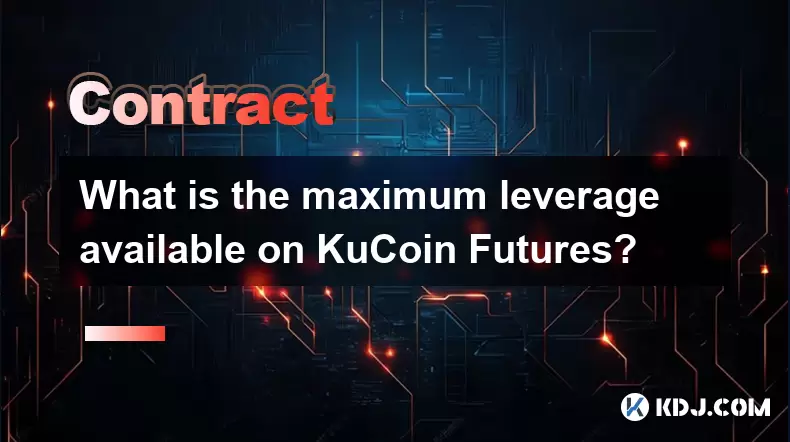
What is the maximum leverage available on KuCoin Futures?
Aug 08,2025 at 10:21am
Understanding Leverage in KuCoin Futures TradingLeverage in KuCoin Futures allows traders to control a larger position size using a smaller amount of ...

What is the minimum deposit for OKX contracts?
Aug 08,2025 at 07:00am
Understanding OKX Contract Trading BasicsOKX is one of the leading cryptocurrency derivatives exchanges, offering a wide range of perpetual and future...
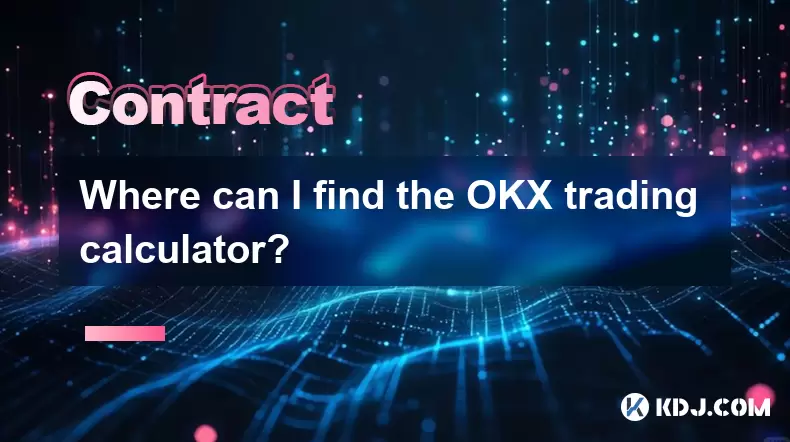
Where can I find the OKX trading calculator?
Aug 08,2025 at 07:49am
Understanding the OKX Trading Calculator FunctionalityThe OKX trading calculator is a powerful analytical tool designed to assist traders in estimatin...
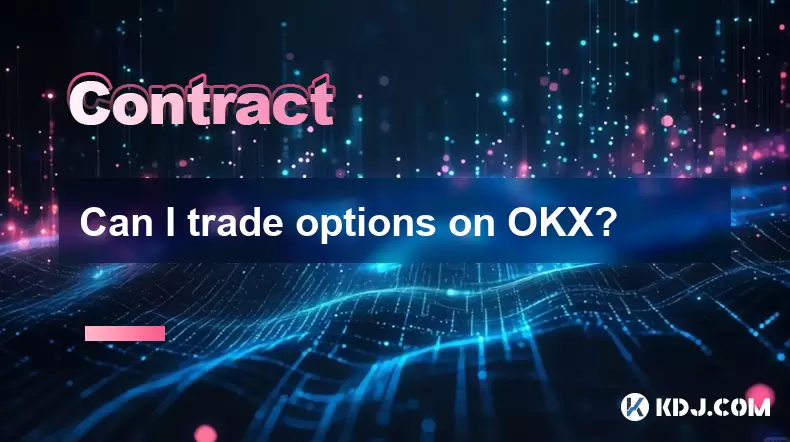
Can I trade options on OKX?
Aug 08,2025 at 11:01am
Understanding Options Trading on OKXYes, you can trade options on OKX. OKX is one of the leading cryptocurrency derivatives exchanges that offers a de...

What is the distinction between mark price and last price on KuCoin?
Aug 08,2025 at 01:58pm
Understanding the Basics of Price in Cryptocurrency TradingIn cryptocurrency exchanges like KuCoin, two key price indicators frequently appear on trad...

What are the specific maker and taker fees on KuCoin Futures?
Aug 08,2025 at 08:28am
Understanding Maker and Taker Fees on KuCoin FuturesWhen trading on KuCoin Futures, users encounter two primary types of fees: maker fees and taker fe...

What is the maximum leverage available on KuCoin Futures?
Aug 08,2025 at 10:21am
Understanding Leverage in KuCoin Futures TradingLeverage in KuCoin Futures allows traders to control a larger position size using a smaller amount of ...

What is the minimum deposit for OKX contracts?
Aug 08,2025 at 07:00am
Understanding OKX Contract Trading BasicsOKX is one of the leading cryptocurrency derivatives exchanges, offering a wide range of perpetual and future...

Where can I find the OKX trading calculator?
Aug 08,2025 at 07:49am
Understanding the OKX Trading Calculator FunctionalityThe OKX trading calculator is a powerful analytical tool designed to assist traders in estimatin...

Can I trade options on OKX?
Aug 08,2025 at 11:01am
Understanding Options Trading on OKXYes, you can trade options on OKX. OKX is one of the leading cryptocurrency derivatives exchanges that offers a de...
See all articles


























